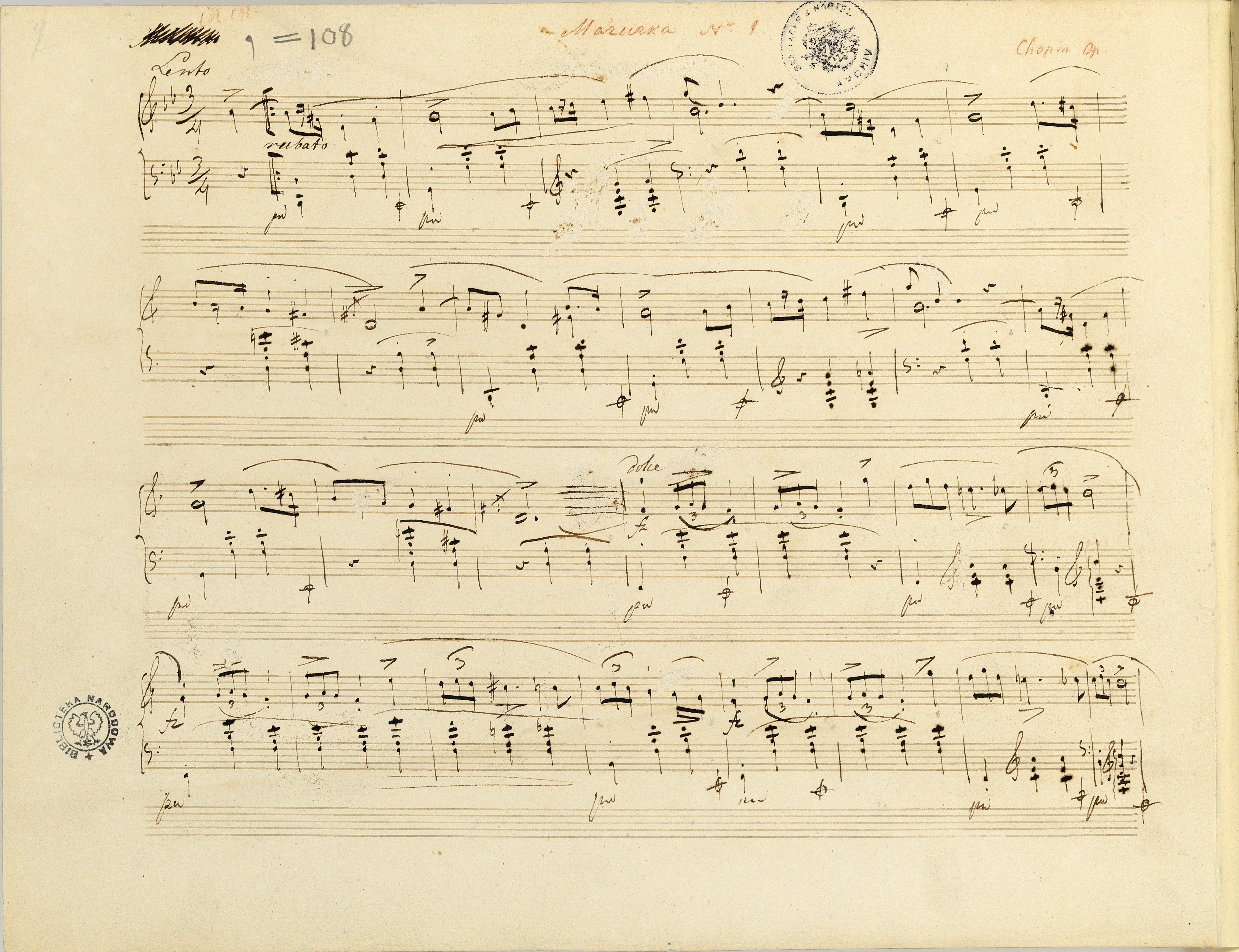Op. 2, Variations in B♭ major
Op. 10, 12 Etudes
Op. 11, Concerto in E minor
Op. 21, Concerto in F minor
Op. 22, Polonaise in E♭ major
Op. 24, 4 Mazurkas
Op. 25, 12 Etudes
Op. 26, 2 Polonaises
Op. 27, 2 Nocturnes
Op. 28, 24 Preludes
Op. 30, 4 Mazurkas
Op. 35, Sonata in B♭ minor
Op. 50, 3 Mazurkas
Op. 63, 3 Mazurkas
Op. 64, 3 Waltzes
(Op. 4), Sonata in C minor




Op. 24 No. 1, Mazurka in G minor
In A (→GE→FE→EE), both here and in analogous bars 51, 59 there is a  before a1. As Chopin used cautionary signs very sparsely, inserting that
before a1. As Chopin used cautionary signs very sparsely, inserting that  three times in that context makes one wonder what cautionary purpose Chopin exactly wanted it to serve. Two possibilities, not mutually exclusive, come to mind:
three times in that context makes one wonder what cautionary purpose Chopin exactly wanted it to serve. Two possibilities, not mutually exclusive, come to mind:
- together with the C minor chord Chopin heard the entire C minor key, including a flat, quite natural occurring in G minor as well;
- the caution was connected with that particular chord, used in its altered version many times by Chopin (the most famous instance being the coda of Scherzo in B minor Op. 20, bars 594-599).
The question of that  comes up in a number of places in various works in which the notation suggests that in minor keys the Phrygian second was something very natural for Chopin, particularly in the context of the subdominant.
comes up in a number of places in various works in which the notation suggests that in minor keys the Phrygian second was something very natural for Chopin, particularly in the context of the subdominant.
Compare the passage in the sources »
category imprint: Editorial revisions
issues: Cautionary accidentals
notation: Pitch

